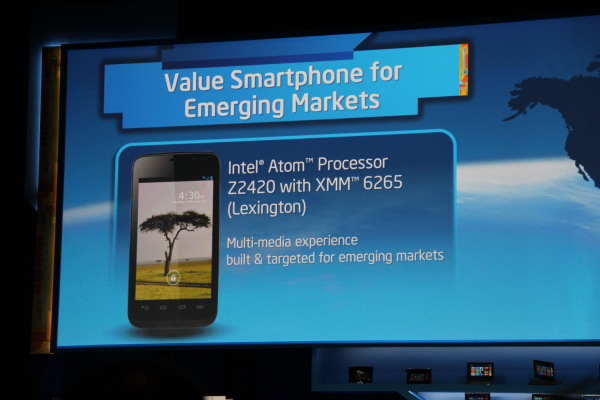It’s no secret that Intel is gunning to gain some mobile traction in emerging markets, and the chipmaker doesn’t seem to be wasting any time in 2013. Kenyan wireless operator (and Intel partner) Safaricom has just officially revealed Africa’s first Intel smartphone, the Android-powered Yolo at an event in Nairobi.
Yeah, you read that right: the Yolo.
Now despite what you make of its name, the phone isn’t actually encouraging young, tech-savvy Africans make poorly-considered life decisions. Instead, it seems more like the continuation of some weird existing naming practices — Intel’s first Atom-powered Android smartphone for instance was dubbed the XOLO X900 when it made its debut in India in April 2012.
The announcement doesn’t come as much of a surprise since Intel’s Mobile and Communications VP Mike Bell pointed out at CES that Safaricom (among other carriers in developing regions) would release smartphones based on the company’s value-oriented smartphone reference design in Q1 2013. That focus on highly cost-sensitive markets means that the Yolo and its ilk don’t exactly have a spec sheet that will set your world on fire — the Yolo sports a 3.5-inch touch display, and its Atom Z2420 processor can hit speeds of up to 1.2GHz, encode and decode 1080p video, and support HSPA+ data speeds. Naturally, that sort of performance is reminiscent of the sorts of devices you can find on domestic store shelves a few years ago (a sentiment Engadget echoed when they got some brief hands-on time at CES), but it’s still a pretty compelling package considering the competition in Kenya.
Of course, there’s always the issue of cost to deal with. Safaricom will soon begin selling the Yolo (and 500MB of free data access) for Kshs. 10,999 (roughly $126) — sounds like a pretty sweet deal, but companies like Huawei have already waging a price war with devices like the $80 IDEOS smartphone on the front line. Really, with the explosion of even less expensive smartphones in Kenya and beyond, one has to wonder how much of a market Intel will actually be able to carve out in Africa.
